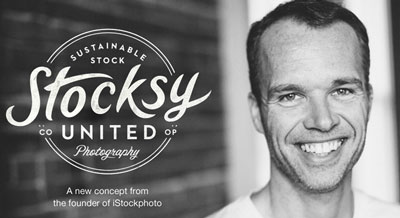You all know the reality. Once it was relatively easy to make good money with stock photography. Then everyone got a good camera. The days of companies like Westlight (now Corbis), Tony Stone and The Image Bank (now both Getty Images), companies that actually made money for themselves and photographers, are irrevocably gone. The last several years have been frustrating. The mergers, acquisition and buyouts by investment firms affect everyone. Now even Sean Locke feels the pinch, one of the top contributors to the world’s number one microstock imagery site iStockphoto who also offered up another selection at Getty Images.
With over 12,000 images and close to a million licenses sold you’d think Locke was a pretty valuable member to the community. But he questioned things — and found himself kicked out.
Right, you’ll say microstock photography is factory photography manning a photographic drill press. It’s not that simple. Now Locke recently wrote the widely discussed A Change in Things on his blog.

Locke recommends everyone to work on a plan B, and he has one. Saying sales are down across the board and contributor satisfaction is low.
After mobilizing support among fellow contributors Locke received a notice from Getty Images and iStockphoto (which is owned by Getty Images) that his account will be terminated within the next 30 days.
Locke doesn’t worry. On the contrary, he feels freed up and became aware of a new entrant to the stock agency world that’s still in beta testing. He will migrate parts of his stock portfolio to several other stock content sites, but his new main platform will probably be Stocksy, a new microstock photography kid on the block that promises to do things differently. “Sustainable Stock Photography,” the logo says, promising a new concept from Bruce Livingstone, founder of iStockphoto.
Doesn’t Stocksy sounds like a modern-day interpretation of early Getty Images?
Stocksy — a stock photography co-operative owned and operated by artists
Our purpose is to create sustainable careers and ownership while building long term equity for our contributing members.
Stocksy pays one of the highest royalty rates in the industry; 50% on regular sales and 100% of extended licenses. In addition to paying dividend to artists on a yearly basis, each member of the co-op owns real equity in the company.
By design, Stocksy pays out all profits to artists.
Locke will continue to make money, despite the miserable state of affairs in the stock photography business. But the writing is on the wall, more than ever, that more and more dumping practices and mergers will lead to even more consolidation in the market with even fewer contributor remuneration and rights.
That’s why this discussion matters, even when one is looking down on stock photography. Because “traditional” interesting and inspiring photography is treated like advertorial and boring photography. Once stock photography was the bane of assignment photographers and not such a bad thing. That was in the days of supply-limiting cartels that could charge a supply-based premium. Even iStockphoto used to be a profitable nice place before the big cartels arrived.
True, the Mozarts are rare, most of us are Salieris. Microstock though, this trend of monopolization, oversupply and diminishing return, can be blamed for ruining the once flourishing, respected job of a photographer. Microstock photographers don’t lack skill, many of them dedicate full-time hours for shooting, lighting and editing. Take Yuri Arcurs, world’s top selling microstock photographer.
It just happens that microstock photography is neither interesting nor inspiring. It appears advertorial and mass-produced. And by commodifying and cheapening photography microstock destroyed the credibility of professional photography. True, for many microstock photography was a welcome wake-up call to get their act together and change ways. Others had to realize that even an iPhone can do.
The trend shows this, as seen in journalism per se and the media business alike: you produce a bulk commodity, you are treated like bulk commodity.
Digital changes everything. Adapt or die.


